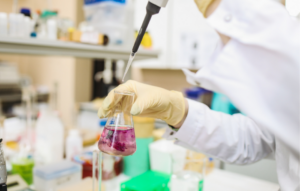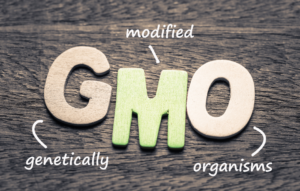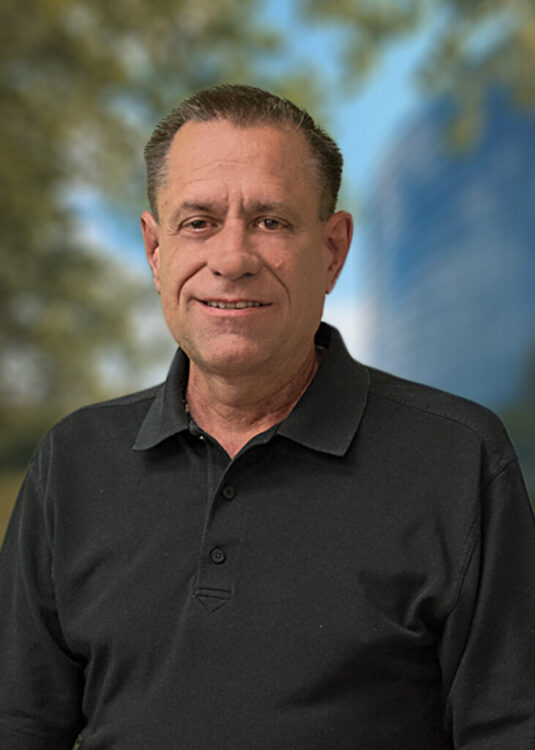What COVID-19 and Corn Have in Common
Life-saving Science has Transformed Both
As we embark on a new year there is much to be thankful for in America. But one thing stands out – the development and distribution of at least two effective vaccines to protect against the COVID-19 virus. As the vaccines are being put into people’s arms, most of us are hoping the illness, death and economic turmoil of 2020 will be in the rearview mirror soon.
Barely one year ago as Americans first started becoming sick with COVID-19, scientists and doctors warned that the typical timeframe for developing a vaccine was at least two years. Yet, in less than one year two vaccines have been rolled out in the U.S. and others are in use abroad.
Science
 How did this happen? In a word: science. The same science that has given us drought- and pest-resistant agricultural crops. It seems when it comes to science, there is little difference between the coronavirus and seed corn. If you want to grow corn that resists pests and requires fewer chemicals, you figure out the characteristic in the corn that attracts pests and you alter that characteristic by modifying its genetic material. It’s the same with the COVID-19 vaccines. They were developed with the same science that the agriculture industry has used for more than 20 years.
How did this happen? In a word: science. The same science that has given us drought- and pest-resistant agricultural crops. It seems when it comes to science, there is little difference between the coronavirus and seed corn. If you want to grow corn that resists pests and requires fewer chemicals, you figure out the characteristic in the corn that attracts pests and you alter that characteristic by modifying its genetic material. It’s the same with the COVID-19 vaccines. They were developed with the same science that the agriculture industry has used for more than 20 years.
In the old days, vaccines were developed by creating a weakened version of a live virus and injecting it into people, causing them to create antibodies that would fight the disease. The process of growing these vaccines was slow and laborious. Meanwhile, many people became sick and died or were crippled for life. Think of the North American polio epidemic of the 1950s.
But the scientists at Pfizer, Moderna, and other pharmaceutical companies worldwide knew that if they could instruct the human genetic code to look for protein indicators (those spiky things that stick out from the spherical coronavirus) and trigger the human body to produce antibodies as soon as the protein indicators were present, people who contracted COVID-19 could fight it off before it made them ill.
The scientists knew this because of wheat, among other crops.
Tall Wheat
Remember when wheat used to be taller? Thirty years ago, wheat typically grew tall enough to pass a grown man’s waist. There was a lot of straw, which has no nutritional value and uses a lot of water, and small heads at the top containing all the nutrition. Using genetic modification, scientists were able to produce wheat with a lot less straw, so it doesn’t grow as tall. As a result, farmers today can produce a better yield of wheat than they used to, while using less water. It saves money, keeps consumer costs down and is good for the environment.
One truism of genetically modified organisms (GMOs) is that pests, viruses, and germs often figure out a way around the changes made in the crops. They adapt. As a result, GMO seeds are further modified a bit every year, so as the pests evolve, the seed can stay one step ahead of them.
When it comes to the vaccine, if a virus were to become vaccine resistant, under the old system utilizing a weakened virus, scientists would have to start from scratch again to create a new, effective vaccine. But with the genetic modification process they would just need to re-map it, which can be accomplished quickly.
Fear of GMOs
 Fear exists in the marketplace about genetically modified organisms (GMOs) that are commonly found in today’s foods, and it’s not unusual to see “GMO-free” on food labels. The industry needs to do a better job of educating consumers about the safety and benefits of GMOs, and the COVID-19 vaccines present a perfect opportunity to do that. Relating the life-saving vaccines to the same science that has enabled farmers to produce larger, less expensive crops could help stem the fear of GMOs. Let’s not forget that many genetically modified seeds have also helped stem famine in other parts of the world by enabling local farmers to produce hardier crops. So, the life-saving potential of genetic modification is present both in the agricultural world and in the world of epidemiology.
Fear exists in the marketplace about genetically modified organisms (GMOs) that are commonly found in today’s foods, and it’s not unusual to see “GMO-free” on food labels. The industry needs to do a better job of educating consumers about the safety and benefits of GMOs, and the COVID-19 vaccines present a perfect opportunity to do that. Relating the life-saving vaccines to the same science that has enabled farmers to produce larger, less expensive crops could help stem the fear of GMOs. Let’s not forget that many genetically modified seeds have also helped stem famine in other parts of the world by enabling local farmers to produce hardier crops. So, the life-saving potential of genetic modification is present both in the agricultural world and in the world of epidemiology.
The next time you hear a friend or family member claim they won’t get the COVID-19 vaccine because of “safety” concerns, ask them to consider the alternative. Then serve them an ear of corn.
The advisors at Adams Brown are ready to help you put plans in place to make 2021 a successful year.

